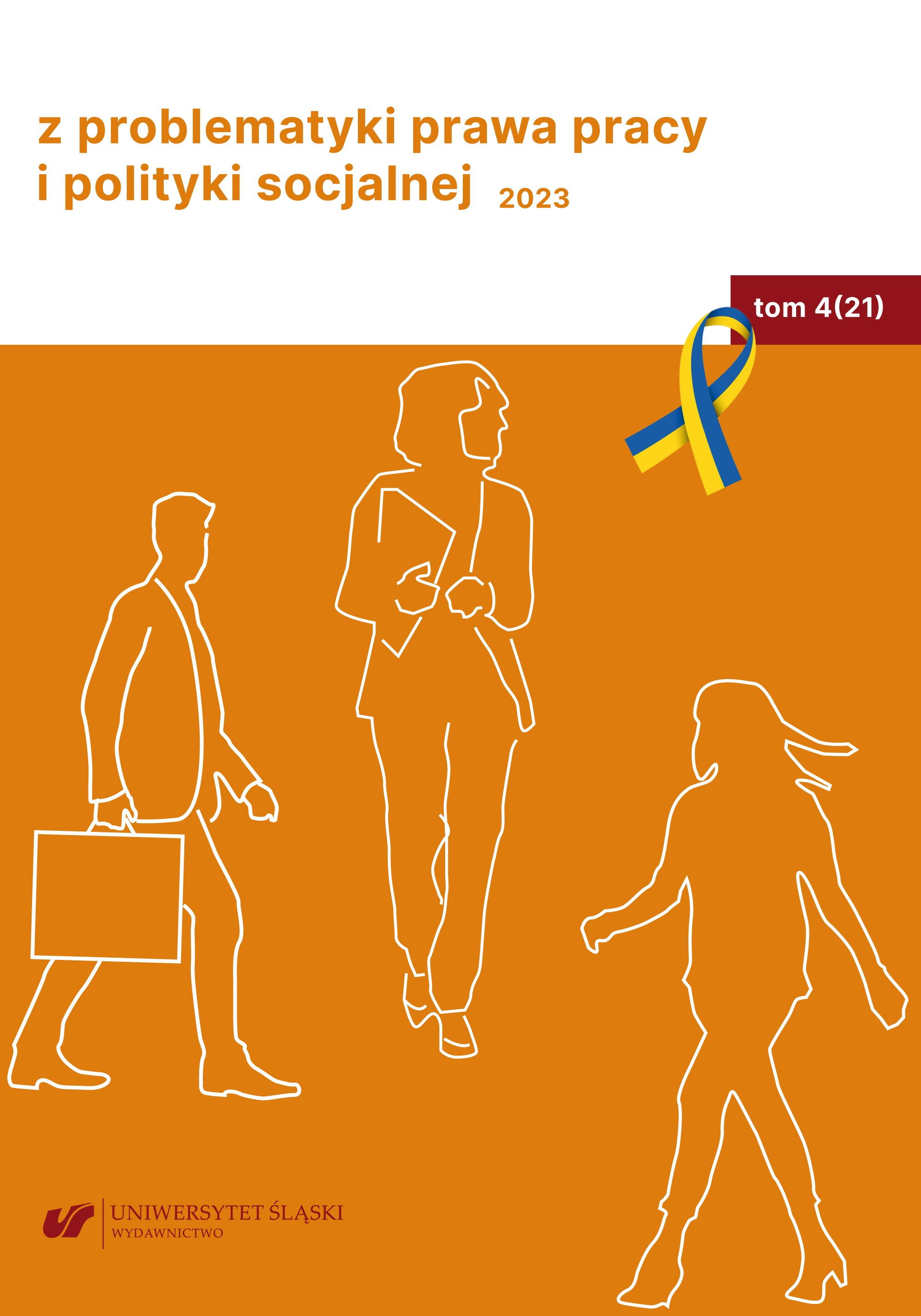Baranowska I.: Projekt: praca zdalna na nowych zasadach. LEX, 2021. https://sip.lex.pl/komentarze-i-publikacje/komentarze-praktyczne/projekt-praca-zdalna-na-nowych-zasadach-470157665 [data dostępu: 13.05.2022].
Google Scholar
Florek L.: Prawne ramy pracy zdalnej. „Z Problematyki Prawa Pracy i Polityki Socjalnej” 2021, T. 19, nr 2, s. 1–14.
Google Scholar
Franconi A., Naumowicz K.: Remote Work During COVID-19 Pandemic and the Right to Disconnect – Implications for Women’s Incorporation in the Digital World of Work. „Z Problematyki Prawa Pracy i Polityki Socjalnej” 2021, T. 19, nr 2, s. 1–20.
Google Scholar
Gocan I.: Praca w domu – wygodnie i efektywnie dla pracodawcy i pracownika. LEX, 2020. https://sip.lex.pl/komentarze-i-publikacje/komentarze-praktyczne/praca-w-domu-wygodnie-i-efektywnie-dla-pracodawcy-i-469916310 [data dostępu: 13.05.2022].
Google Scholar
Iwulski J., Sanetra W.: Kodeks pracy. Komentarz. LexisNexis, Warszawa 2013.
Google Scholar
Jaroszewska-Ignatowska I.: Czas pracy podczas pracy zdalnej. „Dziennik Gazeta Prawna” z września 2021 r.
Google Scholar
Makowski D.: Kilka uwag o pracy zdalnej. „Praca i Zabezpieczenie Społeczne” 2020, nr 10, s. 10–14.
Google Scholar
Mitrus L.: Praca zdalna de lege lata i de lege ferenda – zmiana miejsca wykonywania pracy czy nowa koncepcja stosunku pracy? Część 1. „Praca i Zabezpieczenie Społeczne” 2020, nr 10, s. 3–9.
Google Scholar
Mitrus L.: Praca zdalna de lege lata i de lege ferenda – zmiana miejsca wykonywania pracy czy nowa koncepcja stosunku pracy? Część 2. „Praca i Zabezpieczenie Społeczne” 2020, nr 11, s. 3–10.
Google Scholar
Naumowicz K.: Podstawy prawne kontrolowania pracowników świadczących pracę zdalnie. „Praca i Zabezpieczenie Społeczne” 2020, nr 5, s. 28–35.
Google Scholar
Romer M.T.: Prawo pracy. Komentarz. LexisNexis, 2012. https://sip.lex.pl/#/commentary/587579503/421320/romer-maria-teresa-prawo-pracy-komentarz-wyd-v?cm=URELATIONS [data dostępu: 13.05.2022].
Google Scholar
Śledziewska K., Włoch R.: Gospodarka cyfrowa. Jak nowe technologie zmieniają świat. Wydawnictwa Uniwersytetu Warszawskiego, Warszawa 2020
Google Scholar


 https://doi.org/10.31261/zpppips.2023.21.01
https://doi.org/10.31261/zpppips.2023.21.01

 10.31261/zpppips
10.31261/zpppips